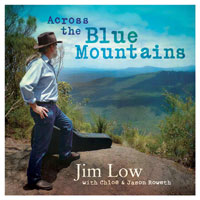JOURNAL OF A TOUR OF DISCOVERY ACROSS THE BLUE MOUNTAINS, in the year 1813, by Gregory Blaxland
They proceeded with the horses on the 20th nearly five miles, and encamped at noon at the head of a swamp about three acres in extent, covered with the same coarse rushy grass as the last station, with a stream of water running through it. 22 The horses were obliged to feed on the swamp grass, as nothing better could be found for them. The travellers left the camp as before, in the afternoon, to cut a road for the morrow's journey. The ridge along which their course lay now became wider and more rocky, but was still covered with brush and small crooked timber, except at the heads of the different streams of water which ran down the side of the mountain, where the land was swampy and clear of trees. The track of scarcely any animal was to be seen, and very few birds. One man was here taken dangerously ill with a cold. Bearing of the route at first, south-westerly; afterwards north-north-west, and west-north-west.
Their progress the next day was nearly four miles, in a direction still varying from north-west-by-north to south-west. They encamped in the middle of the day at the head of a well-watered swamp, about five acres in extent; pursuing, as before, their operations in the afternoon. 23 In the beginning of the night the dogs ran off and barked violently. At the same time something was distinctly heard to run through the brushwood, which they supposed to be one of the horses got loose; but they had reason to believe afterwards that they had been in great danger — that the natives had followed their track, and advanced on them in the night, intending to have speared them by the light of their fire, but that the dogs drove them off. 24
On Saturday, the 22nd instant, they proceeded in the track marked the preceding day rather more than three miles, in a south-westerly direction, when they reached the summit of the third and highest ridge of the mountains southward of Mount Banks. 25 From the bearing of Prospect Hill and Grose Head, they computed this spot to be eighteen miles in a straight line from the River Nepean 26, at the point at which they crossed it. On the top of this ridge they found about two thousand acres of land clear of trees, covered with loose stones and short coarse grass, such as grows on some of the commons in England. Over this heath they proceeded for about a mile and a half, in a south-westerly direction, and encamped by the side of a fine stream of water, with just wood enough on the banks to serve for firewood. From the summit they had a fine view of all the settlements and country eastward, and of a great extent of country to the westward and south-west. But their progress in both the latter directions was stopped by an impassable barrier of rock, which appeared to divide the interior from the coast as with a stone wall, rising perpendicularly out of the side of the mountain. 27
In the afternoon they left their little camp in the charge of three of the men, and made an attempt to descend the precipice by following some of the streams of water, or by getting down at some of the projecting points where the rocks had fallen in; but they were baffled in every instance. In some places the perpendicular height of the rocks above the earth below could not be less than four hundred feet. Could they have accomplished a descent, they hoped to procure mineral specimens which might throw light on the geological character of the country, as the strata appeared to be exposed for many hundred feet, from the top of the rock to the beds of the several rivers beneath. The broken rocky country on the western side of the cow pasture has the appearance of having acquired its present form from an earthquake, or some other dreadful convulsion of nature, at a much later period than the mountains northward, of which Mount Banks forms the southern extremity. The aspect of the country which lay beneath them much disappointed the travellers: it appeared to consist of sand and small scrubby brushwood, intersected with broken rocky mountains, with streams of water running between them to the eastward, towards one point, where they probably form the Western River, and enter the mountains.
They now flattered themselves that they had surmounted half the difficulties of their undertaking, expecting to find a passage down the mountain more to the northward. 28.

